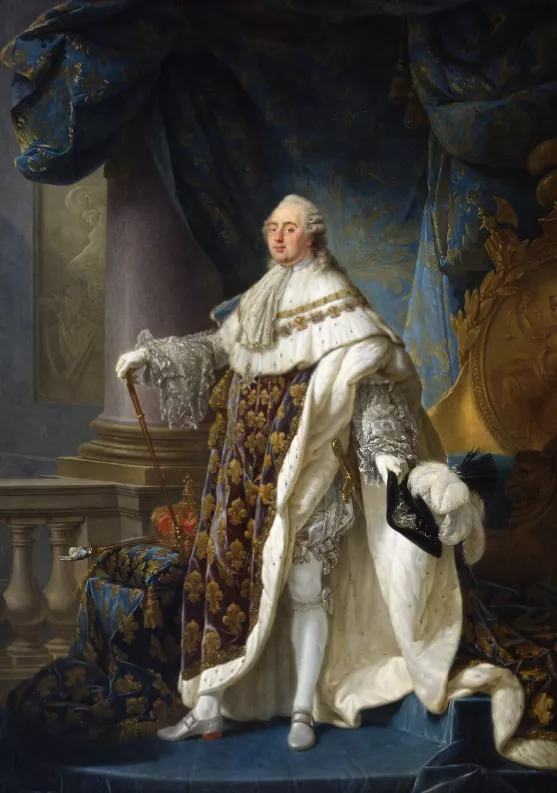The partnership between the Palace of Versailles and the Google Cultural Institute continues through the international project« We Wear Culture » with the creation of two virtual exhibitions : « Fashion at Versailles : Her » et « Fashion at Versailles : Him ».

Fashion at Versailles
The project
Fashion at Versailles continues to inspire notable contemporary designers. The two virtual exhibitions offer a decryption of the symbolic trends in both men and women's fashion which emerged in the 1780s, under the rule of Louis XVI, around the iconic figure of Marie-Antoinette.
Find the exhibitions :
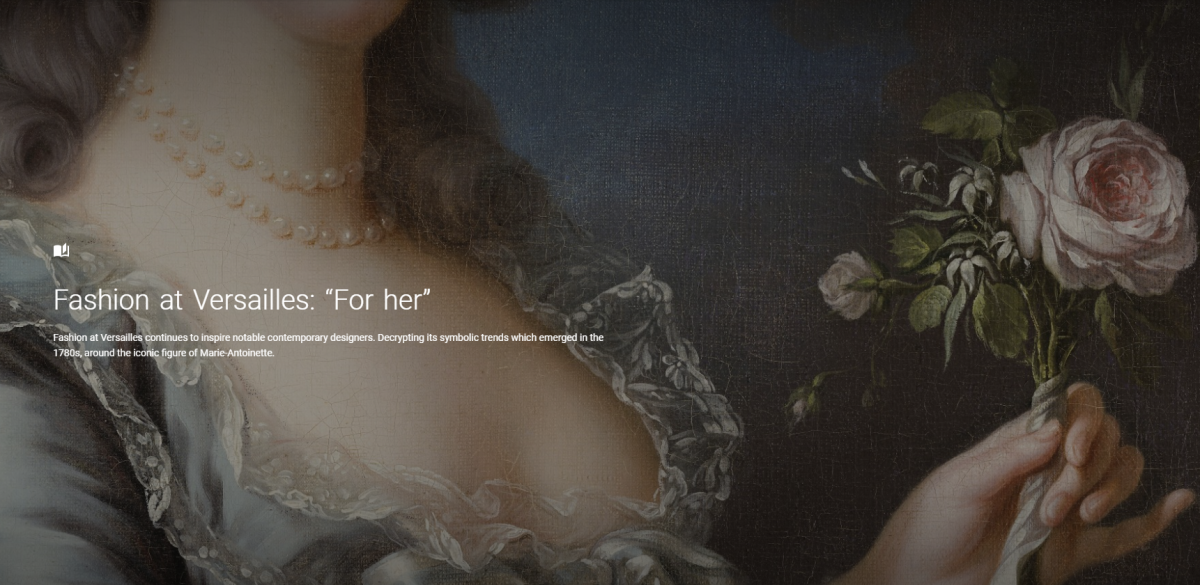
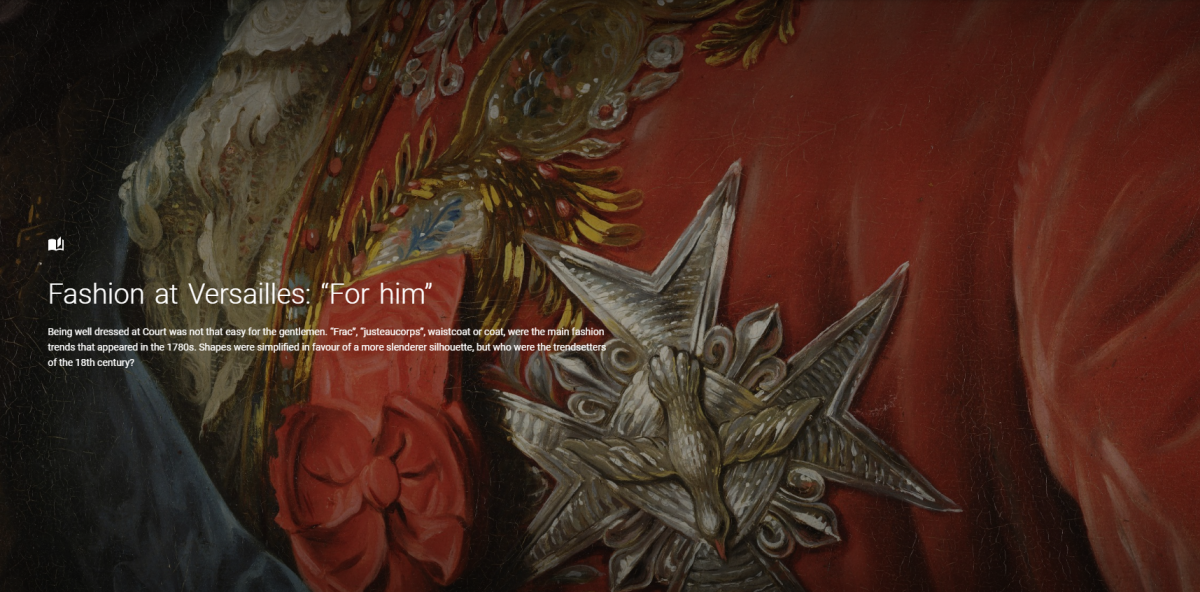
Fashion at court
Early signs of the obsession with fashion as we know it today first appeared in the late 18th century. Dressmakers, bodice makers and stylists such as Rose Bertin, Marie-Antoinette’s “Minister of Fashion,” who at the time established a princely clientele at Versailles and other European Courts, built a new kind of empire. Fashion journals at the time also give an idea of the tone, such as Monument du costume published between 1777 and 1783 and printed by Moreau le Jeune and Freudeberg, which described the different ways of dressing according to the time of day. The importance of Cabinet des modes, published between 1785 and 1786, should also be highlighted, as well as of Mercure galant and, especially, Galerie des modes et costumes français, published from 1778 to 1787.
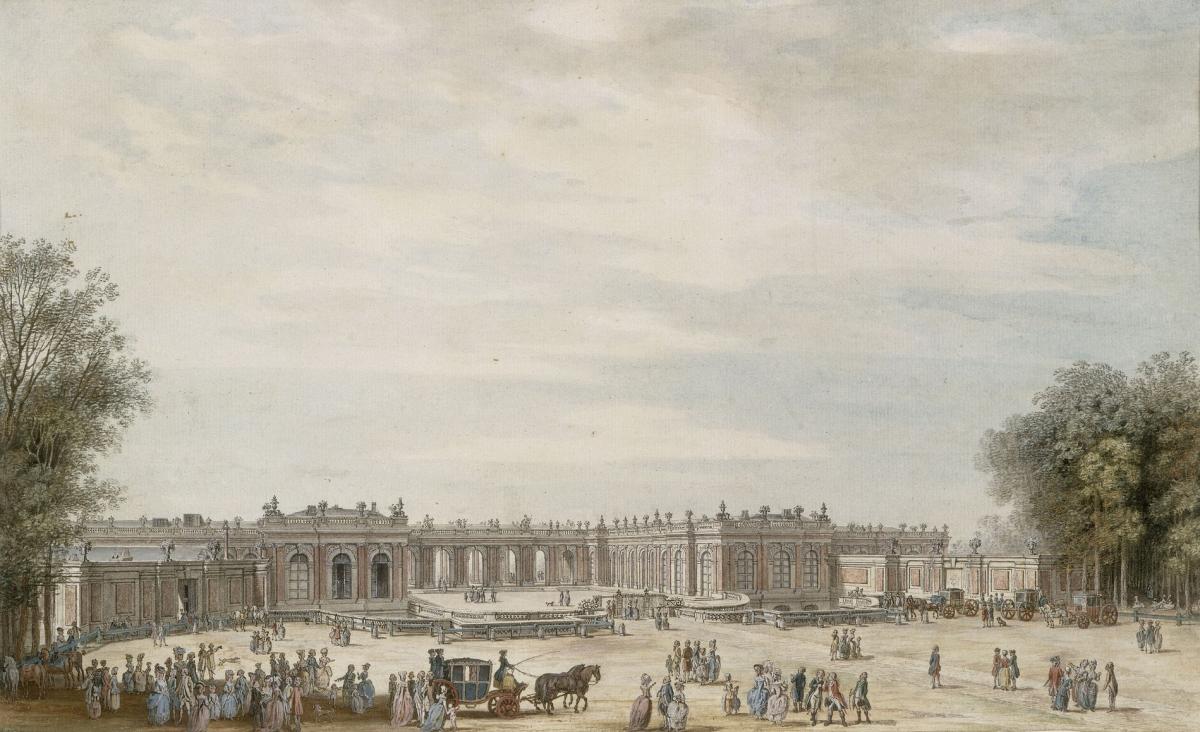
Louis-Nicolas, chevalier de Lespinasse, Vue de Grand Trianon du côté de l’entrée
The illustrator, Lespinasse, liked to animate numerous characters whose attitudes bore witness to the behaviour of visitors in the gardens of Versailles.
© RMN-Grand Palais (Château de Versailles) / Gérard Blot
Although iconic, changes in fashion in the French Court were in fact exceptional in the history of clothing. Countrymen’s attire was composed of a simple shirt, frac, breeches, stockings and leather shoes. Hair was worn long and tied back at the nape of the neck, often with a felt cap. Countrywomen and middle-class women wore a shirt under a corset, a short skirt over several petticoats, an apron, a fichu on their shoulders, a bonnet as a hat, and flat leather shoes on their feet.
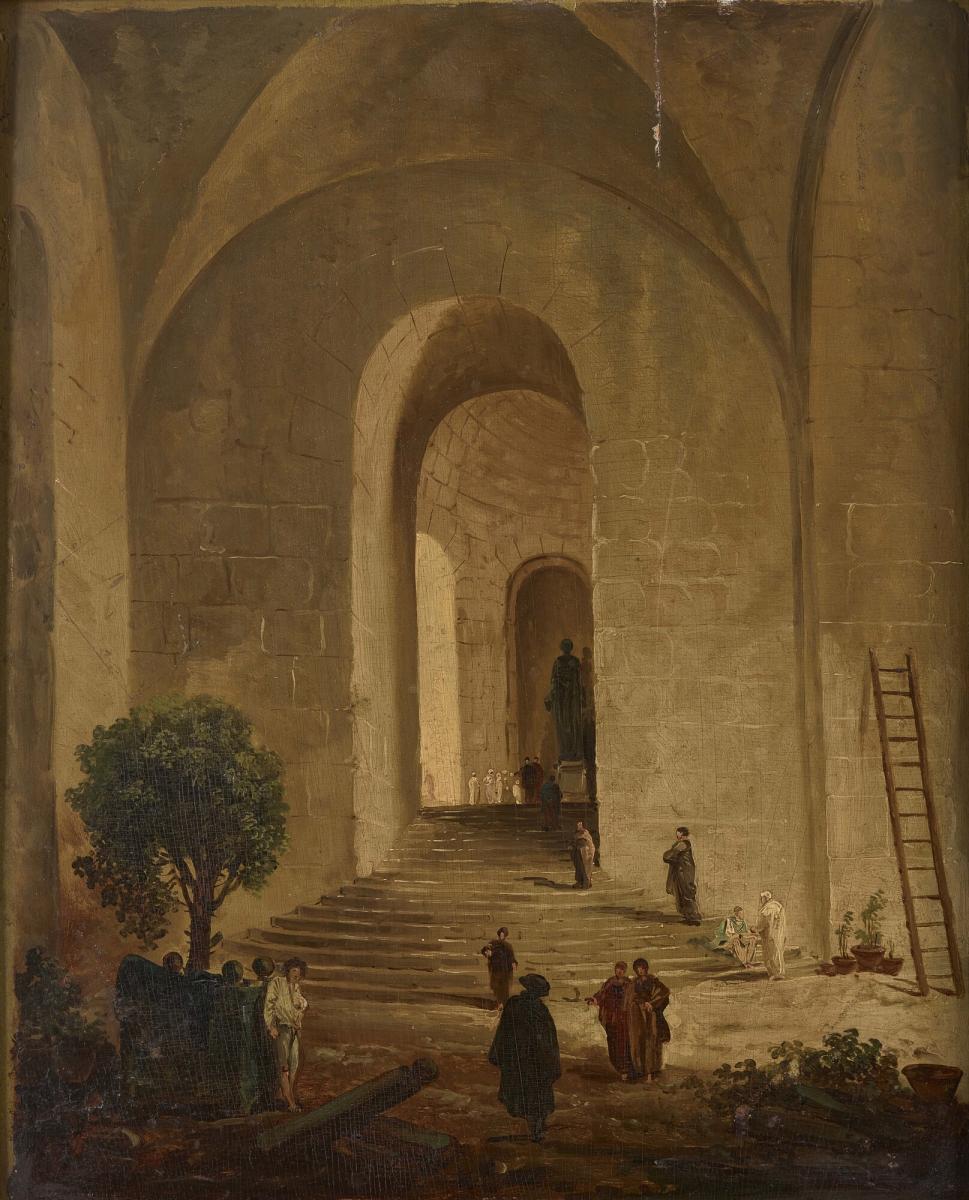
Hubert Robert, The Orangery of the Palace of Versailles
This image of the Orangery provides a good illustration of clothing at Versailles for the working classes: we can identify the servants simply dressed in shirts and breeches, with a long coat and tricorne hat
© Château de Versailles, Dist. RMN / © Christophe Fouin
Curators
Directed by Béatrice Sarrazin, General curator, in charge of the paintings department,and by Yves Carlier, General curator, in charge of the collections management :
Géraldine Bidault, in charge of the photography library and the digitization of the collections, curator of the digital exhibition
Vincent Bastien, PhD in Art History, curator assistant, curator of the digital exhibition
Glossary
Fashion in the 1780s: which gown for which occasion?
Robe retroussée dans les poches: this gown was fashionable during the reigns of Louis XV and Louis XVI. It was the most popular trend among the middle classes and was standard dress for servants.
Robe à la polonaise or robe à la reine: this gown was fashionable during the reign of Louis XVI. The specific feature of this dress is the bodice, which was a single piece with the double skirt.
Robe à la lévite: this was a straight, simple and supple gown with pleats at the back. Its loose fit gives it a resemblance to the négligé dress worn by women at this time in their private spaces.
Caraco: an adaptation of the robe à la polonaise and the robe à la française, the caraco was cut to hang a little lower than the hips and had short basques.
Habit à la française: this was mainly worn by men at Court. The habit à la française comprised a justaucorps, coat and breeches.
Frac: a men’s garment worn in town or as part of a uniform. It was a type of short coat with a collar which came down to the waist and was decorated with long, narrow basques at the back.
Appearance at Court :
Grand habit de cour:
Grand habit de cour: this was composed of a manteau adorned with fleur-de-lis with ermine on the inside, and a wide satin or silk skirt with a panier that was sumptuously decorated, and royal symbols such as the crown.
Men’s grand habit de cour: the royal figure was identified by his clothing, characteristic of his function, and namely the coronation attire which included regalia.
Habit de cour:
Robe à la française: until the French Revolution, this was a formal gown with paniers worn for the theatre and balls. Gowns with paniers could be decorated with falbalas, beads and precious stones.
Pouf: a high hairstyle comprising a piece of gauze and false hair inserted between locks. This hairstyle was often heavily adorned with accessories such as model boats or hot air balloons.
Habit de cour: this was often also called a habit à la française. During festive occasions, it was referred to the Costume de Henri IV, mainly because of the ruff, stuffed breeches and hat with plumes.
Hunting attire:
Women's hunting attire: It often consisted of a men’s garment or a redingote gown with a tiered collar. For riding astride, breeches were used which were often made of black silk and sometimes worn under a skirt. It could also comprise a jacket-gown and pelerine.
Military uniforms:
Military uniforms: these identified the specific function of each officer, and were consequently very varied. Examples include the uniform of the Captain-Colonel of the King’s Hundred Swiss Guards with a ruff, plumes and silver coat with floral motifs.
Innovations and liberties:
Robe en gaulle: from 1781 onwards, the chemise à la reine or robe en gaulle, which Rose Bertin created for Marie-Antoinette, sparked a mini revolution. It was a gown for wearing in private spaces and made of cotton or white linen, gauze or silk.
Robe en bergère: this gown was directly inspired by the attire worn by country women described above. It comprised a corset laced over a white linen shirt and a simple cotton skirt.
Robe à l’orientale: this was really a déshabillé gown made of white or ecru silk or muslin that was tightened at the chest and accentuated the waist. Its design was inspired by literature and travellers’ tales.
The English fashion:
Robe à l’anglaise: this gown was characterised by the rejection of paniers, which were replaced by a tournure (a frame that was padded using horse hair). It was inspired by the redingote worn by men during the same period, and was always close-fitting at the waist.
The redingote: this garment was really a rider’s coat. Imported from England in 1725, its name is a French adaptation of the English “riding coat”. It was long with small collars which could be turned up.






